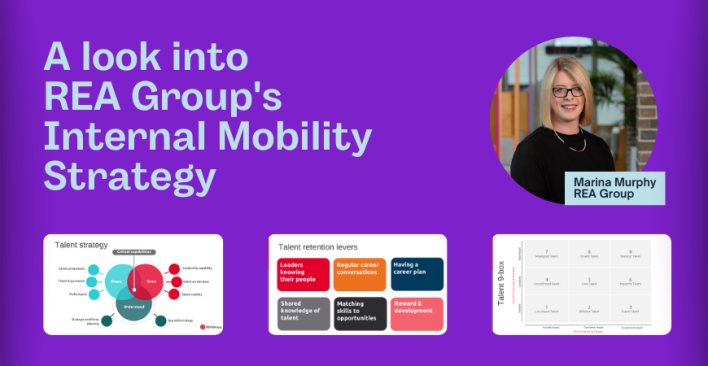Influence: A Weapon for Successful Change

Working in Talent Management, one of the biggest challenges is not only identifying disruption up ahead, but influencing those around you in a way that motivates them to change and adapt to the constantly changing landscape. Those that can do this well are able to adapt their organisations quickly, function more effectively and are able to innovate more readily – they’ve used their influence to create a culture that’s receptive to adaptation and change.
This week I spoke briefly to Christine Connor and Stuart Elliott, as to how they work to facilitate change as well as how they change the mindsets of those around them.
Christine Connor, Head of Talent Acquisition, Coles

Designing and implementing change that will define the future of Coles talent acquisition is one of the most important aspects of Christine Connor’s role as Head of Talent Acquisition. With over 100,000 employees in 762 stores through Australia, ensuring changes make their way through to every aspect of the organisation’s HR strategy, from C-suite leaders to in-store hiring managers is a huge feat.
Christine says finding the champions is the key to getting support for your initiatives.
“I always start with identifying and leveraging the key supporters in the organisation. I find the ones who are well respected and can influence the organisation”.
As practically as can be undertaken, Christine demonstrates the changes she is looking to undertake with a reasonable sample of these supporters. Once it’s understood where theses supporters sit in relation to the change, she’ll take the idea to a formal implementation review, using the supporters as impetus to change.
Stuart Elliott, Executive Manager, Workforce Strategy, Suncorp
 Stuart works in the area of strategic workforce strategy and the ability to fundamentally change the impact of Human Resources on critical business outcomes. Stuart has been the driver of change at both Westpac, where he was the Head of People Strategy and Suncorp Bank, where he is currently the Executive Manager of Workforce Strategy and Design.
Stuart works in the area of strategic workforce strategy and the ability to fundamentally change the impact of Human Resources on critical business outcomes. Stuart has been the driver of change at both Westpac, where he was the Head of People Strategy and Suncorp Bank, where he is currently the Executive Manager of Workforce Strategy and Design.
Stuart says that in the innovation space, if you’ve identified a problem and created discomfort you have to engage people to get them on board and change their mindsets.
“For anything to succeed people need to have a personal interest in the innovation, and see how it works for them”.
His method for implementing change is a four step process:
Step One – Demonstrating The Need For Change
“I try to understand where we are in an area, and work out whether our current situation is tenable. The best outcome here is when the situation is not tenable and various stakeholders are uncomfortable”
Step Two – Belief That Change Is Possible
“You must have the belief that you have the capability to implement change. There’s nothing worse than being uncomfortable with your current situation, but you lacking the confidence to change. That’s a very difficult situation”
Step Three – Consequences
“We look at the consequences of staying as you are, and then highlight the positive consequences of moving and initiating change”
Step Four – Social Proof
“Role modelling is an important next step as stakeholders need to see that other organisations are also doing this, making the same changes, and moving in a similar way”
If you would like more tips on how to develop your influencing skills, I highly recommend Dr Robert Cialdini’s “The Power Of Influence”. He has made a life-time study of influencing tactics, and presents them in a practical way that you can apply to all aspects of your work.
Christine and Stuart will be joining the largest network of Australian and New Zealand Talent Management leaders in Sydney this June at #ATC2015 for three days of learning, knowledge sharing and networking. You can join them at the event by registering here.
-Trevor
—- Change—-

Jenni Nelson – Changing Recruitment Using Cialdini’s “Weapons of Influence”
Lucy Fisher – Changing Your Culture To One Of Inclusivity
Stan Rolf – What Happens When Your Applicants Get Innovative
Chris South – Measuring The ROI Of Your Social Media Strategy
ATC Events is calling on HR professionals in Australia and New Zealand to participate in our 2015 study on Cost-Per-Hire. This study will look at how Acquisition Functions in our region measure and report on their Cost-Per-Hire data, in relation to permanent hires. Information collected in the survey will be compiled into a report which we will share in June.

Related articles
Leave a Reply
Sign up to our newsletter
Get a weekly digest on the latest in Talent Acquisition.
Deliver this goodness to my inbox!


